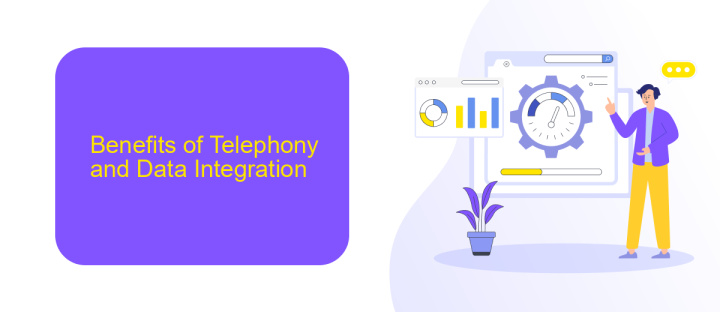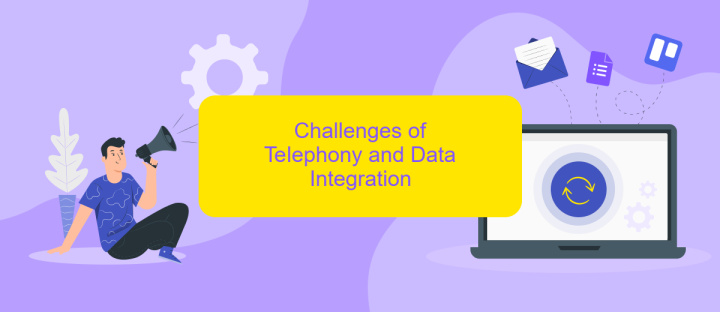The Integration of Telephony and Data Technologies
The integration of telephony and data technologies represents a significant leap in modern communication systems. By merging voice and data services, businesses and individuals can experience enhanced connectivity, streamlined operations, and cost-efficiency. This convergence not only revolutionizes traditional telephony but also paves the way for innovative applications and services, driving the future of global communication.
Introduction
In today's rapidly evolving technological landscape, the convergence of telephony and data technologies has become increasingly significant. This integration offers numerous benefits, including enhanced communication, streamlined processes, and improved efficiency for businesses and individuals alike. By leveraging these combined technologies, organizations can create more cohesive and effective communication systems that cater to the diverse needs of their users.
- Seamless communication across various platforms
- Improved data management and accessibility
- Cost-effective solutions for businesses
- Enhanced customer experience and support
One of the key players in facilitating this integration is ApiX-Drive, a service that simplifies the process of connecting different telephony and data platforms. ApiX-Drive enables users to automate workflows, synchronize data, and ensure that all systems work together seamlessly. This not only saves time and resources but also allows businesses to focus on their core activities while maintaining efficient communication channels.
Benefits of Telephony and Data Integration

The integration of telephony and data technologies offers numerous benefits for businesses. One of the most significant advantages is the enhancement of communication efficiency. By merging voice and data channels, companies can streamline their operations, reduce redundancy, and improve response times. This integration allows for seamless communication between different departments, ensuring that information is shared quickly and accurately. Additionally, it supports advanced features such as call analytics, which provide valuable insights into customer interactions and help in making data-driven decisions.
Another key benefit is cost savings. Integrating telephony with data technologies reduces the need for multiple communication systems, lowering both initial setup costs and ongoing maintenance expenses. Services like ApiX-Drive facilitate this integration by offering easy-to-use tools that connect various applications and platforms without extensive technical expertise. This not only simplifies the integration process but also ensures that businesses can focus on their core activities while enjoying the advantages of a unified communication system. Overall, the integration of telephony and data technologies is a strategic move that can lead to improved operational efficiency and significant financial savings.
Challenges of Telephony and Data Integration

The integration of telephony and data technologies presents several challenges that organizations must address to ensure seamless communication and data flow. The complexity of merging these two distinct systems often leads to technical and operational hurdles.
- Compatibility Issues: Different telephony and data systems may not be inherently compatible, requiring custom solutions or middleware to bridge the gap.
- Data Security: Integrating telephony with data networks increases the risk of data breaches, necessitating robust security measures.
- Scalability: Ensuring the integrated system can scale with business growth is essential but challenging.
- Cost: The financial investment required for integration, including hardware, software, and maintenance, can be substantial.
- Regulatory Compliance: Adhering to various regulatory requirements for both telephony and data can complicate the integration process.
To mitigate these challenges, services like ApiX-Drive offer automated integration solutions that simplify the process. ApiX-Drive connects different telephony and data systems, ensuring compatibility and security while reducing costs and enhancing scalability. By leveraging such tools, organizations can overcome the complexities of telephony and data integration effectively.
Best Practices for Successful Telephony and Data Integration

Successful integration of telephony and data technologies requires meticulous planning and execution. Start by evaluating the specific needs of your organization and identifying the key areas where integration can enhance efficiency and customer experience. This foundational step ensures that the integration aligns with business goals.
Next, choose the right tools and platforms to facilitate the integration process. ApiX-Drive, for instance, is a versatile service that simplifies the connection between various telephony systems and data platforms, ensuring seamless data flow and automation.
- Conduct a thorough needs assessment to identify integration opportunities.
- Select reliable tools like ApiX-Drive to streamline the integration process.
- Ensure data security and compliance with relevant regulations.
- Train staff on new integrated systems to maximize their effectiveness.
- Regularly monitor and optimize the integrated systems for continuous improvement.
By following these best practices, organizations can achieve a seamless integration of telephony and data technologies, leading to improved operational efficiency and enhanced customer satisfaction. Continuous evaluation and optimization will ensure that the integrated systems remain effective and aligned with evolving business needs.
Conclusion
The integration of telephony and data technologies has revolutionized the way businesses operate, enhancing communication efficiency and streamlining processes. By merging these technologies, organizations can now enjoy seamless connectivity, improved customer interactions, and real-time data access, which collectively contribute to better decision-making and increased productivity. The synergy between telephony and data systems is essential for modern enterprises aiming to stay competitive in a rapidly evolving digital landscape.
Implementing these integrations can be complex, but tools like ApiX-Drive simplify the process, allowing businesses to effortlessly connect various applications and services. ApiX-Drive offers a user-friendly platform that automates data transfer between telephony systems and other business tools, ensuring that critical information is always up-to-date and accessible. By leveraging such solutions, companies can focus on their core activities while enjoying the benefits of integrated telephony and data technologies, ultimately driving growth and innovation.
FAQ
What is the integration of telephony and data technologies?
What are the benefits of integrating telephony with data technologies?
How can businesses implement telephony and data integration?
What challenges might businesses face when integrating telephony and data technologies?
Can small businesses benefit from telephony and data integration?
Time is the most valuable resource in today's business realities. By eliminating the routine from work processes, you will get more opportunities to implement the most daring plans and ideas. Choose – you can continue to waste time, money and nerves on inefficient solutions, or you can use ApiX-Drive, automating work processes and achieving results with minimal investment of money, effort and human resources.

